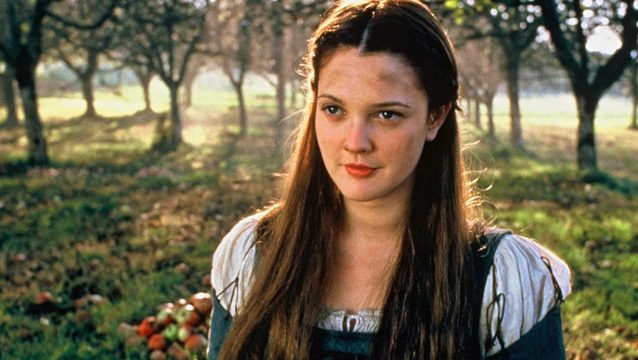Ever After is one of the films I might nominate for Gillianren’s Women’s Canon. It’s not vying to mine the stonier ground of films like Meek’s Cutoff, and it’s not taking the more literary slant of some recent, riskier small-scale films like Lady Bird or 20th Century Women. But it’s a worthy–or, since that word feels a little musty, lasting–modern women’s picture, in good company alongside other engaging, warm, women-centric fare. Like Clueless, Ever After looks back at a classic text, albeit a fuzzier and less defined one, and cheerfully modernizes it. Clueless does so by grasping both the essentials of Austen’s text and the essentials of nineties Beverly Hills; Ever After does so by taking a world that never existed and making it into another world that never existed, borrowing from fairy tales and the Renaissance and the girl power movement and classic melodrama until it makes something boisterously its own.
You could call it fluff. But it’s the kind of movie that reminds you of the usefulness of fluff; who wants to live a life completely devoid of s’mores?
This is a Cinderella story that lives partly by two central performances and partly by its free-roaming sense of humor. Drew Barrymore charmingly stars as Danielle, the good-hearted spitfire reduced to poverty and servanthood but only rarely meekness; her opposite romantic number, Prince Henry, is a perfectly serviceable Dougray Scott, embodied with an unstable combination of petulance, arrogance, and nascent responsibility. Henry and Danielle make for a solid romantic drama. But Danielle’s true foil, and Barrymore’s equal in carrying the film, is her stepmother, the Baroness, played by Anjelica Huston with amazing high-strung theatricality. There’s a kind of sleek campiness to the Baroness that makes her plausibly comic in one moment–as she pathetically grovels for any scrap of elevating royal attention–and absolutely vicious one in the next–as she brutally strikes out at anyone in her power. In a film full of high drama–swordfights, threats of rape, dramatically crashed balls, public rescues–there is nothing more devastating than the Baroness’s answer when Danielle tearfully asks if her stepmother ever, even for a moment, even just a little, loved her: “How can anyone love a pebble in their shoe?”
Things like that quietly justify Ever After‘s metafictional theme. There are ways of relating narratives that elevate the people involved in them, treating them as inherently possessing all the grand pathos of humanity. Making art about groups of people usually excluded from centrality in it can be its own quiet force for good. Here, Danielle’s goodness comes partly from her inability to treat people poorer or weaker than her as “small”: she sees larger-than-life characters everywhere she looks, and for the most part, people find themselves rising to her expectations of their grandeur. (Her appeal to Henry certainly spurs him on to enormous commitments to public works projects, as it should: “You have everything you want, but still life holds no joy. Yet you insist on making fun of those who would see life for its possibilities.”) The Baroness, on the other hand, trivializes; Henry, in his hurt rejection of Danielle, who has lied to him, does the same: “Do not address me so informal, Madame. I am the Prince of France, and you are just like them.” Danielle’s final victory over her stepmother–and an inspired bit of ownage–comes from finally and theatrically establishing her importance in the Baroness’s life right as the Baroness loses her importance in Danielle’s.
Then, of course, it’s also just fun and funny, pulling out gleeful anachronisms, pointed historical references (“divorce is only something they do in England”), and just good old-fashioned jokes (“I will deny you the crown and… live forever!” as a royal parental threat never fails to make me laugh). It is, more than anything else, good entertainment.
Ever After is available streaming on HBO.

